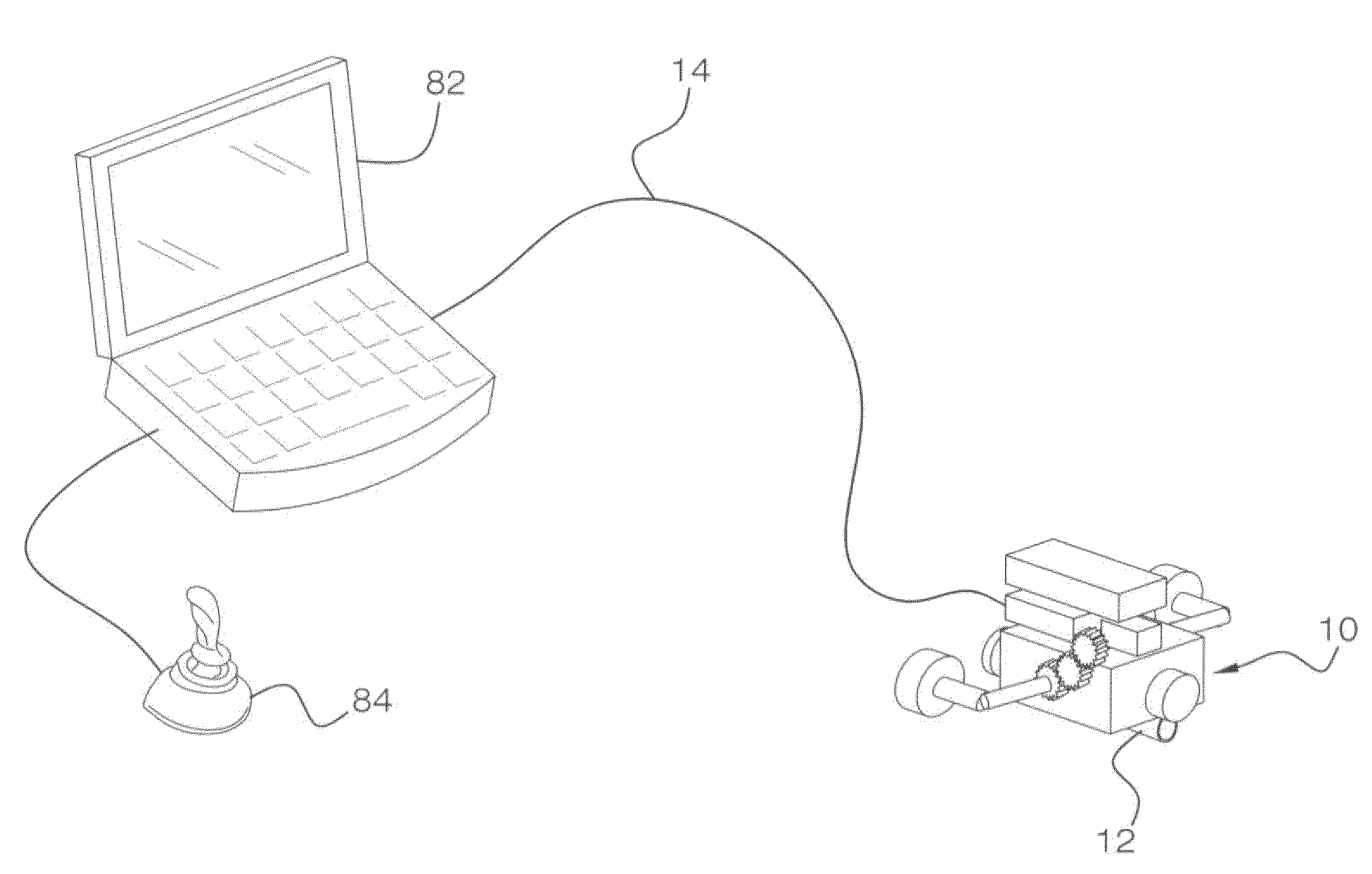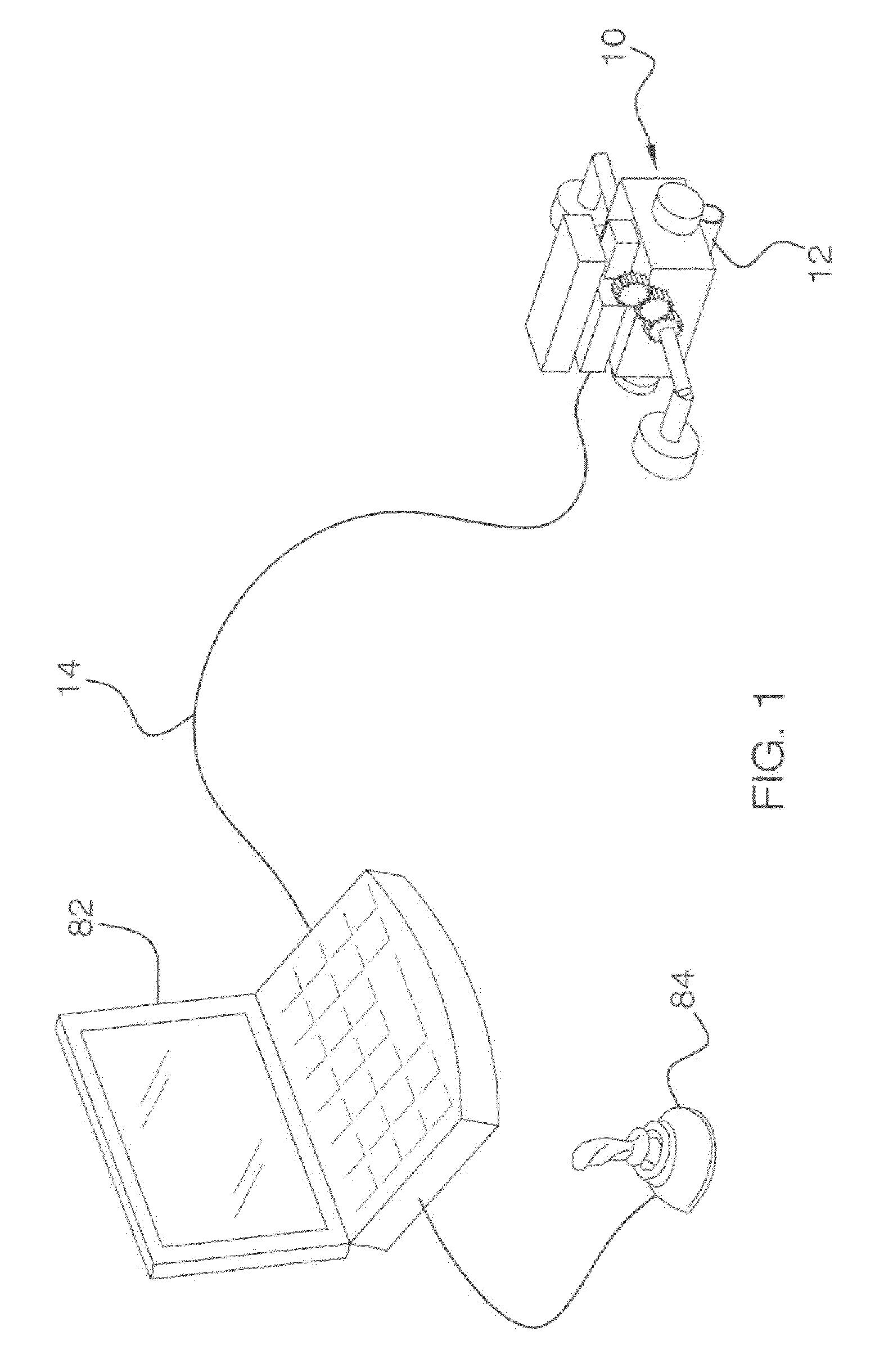Remotely Operated Underwater Vehicle
a remote-operated, underwater technology, applied in underwater equipment, special-purpose vessels, television systems, etc., can solve the problems of reducing efficiency even further, affecting the safety of underwater vehicles, and not optimally optimizing the configuration.
- Summary
- Abstract
- Description
- Claims
- Application Information
AI Technical Summary
Benefits of technology
Problems solved by technology
Method used
Image
Examples
case 16
[0031]Case 16 provides the attachment points for camera 12, drive motors 20 and 50, drive arms 40 and 60, servo 70, floatation 90 and control electronics 100. Floatation 90 counterbalances the weight of the ROV to provide approximately neutral buoyancy. For shallow operation, a block of closed cell foam can be used. For deeper operation, the foam can be covered in a solid outer shell such as fiberglass, or a sealed container or other hard buoyant object can be used for floatation.
[0032]Right arm gear 42 is connected to right arm 40, and the corresponding left arm gear 62 is connected to left arm 60. Servo gear 72 is connected to servo 70, and drives right idler gear 44, which also connects to rotation shaft 74. Shaft 74 also connects to left idler gear 64, shown in left perspective view FIG. 3. When servo 70 turns servo gear 72, right idler gear 44 rotates right arm 40 and also rotates rotation shaft 74 and left idler gear 64, which rotates left arm 60. In this fashion servo 70 cont...
PUM
 Login to View More
Login to View More Abstract
Description
Claims
Application Information
 Login to View More
Login to View More - R&D
- Intellectual Property
- Life Sciences
- Materials
- Tech Scout
- Unparalleled Data Quality
- Higher Quality Content
- 60% Fewer Hallucinations
Browse by: Latest US Patents, China's latest patents, Technical Efficacy Thesaurus, Application Domain, Technology Topic, Popular Technical Reports.
© 2025 PatSnap. All rights reserved.Legal|Privacy policy|Modern Slavery Act Transparency Statement|Sitemap|About US| Contact US: help@patsnap.com



